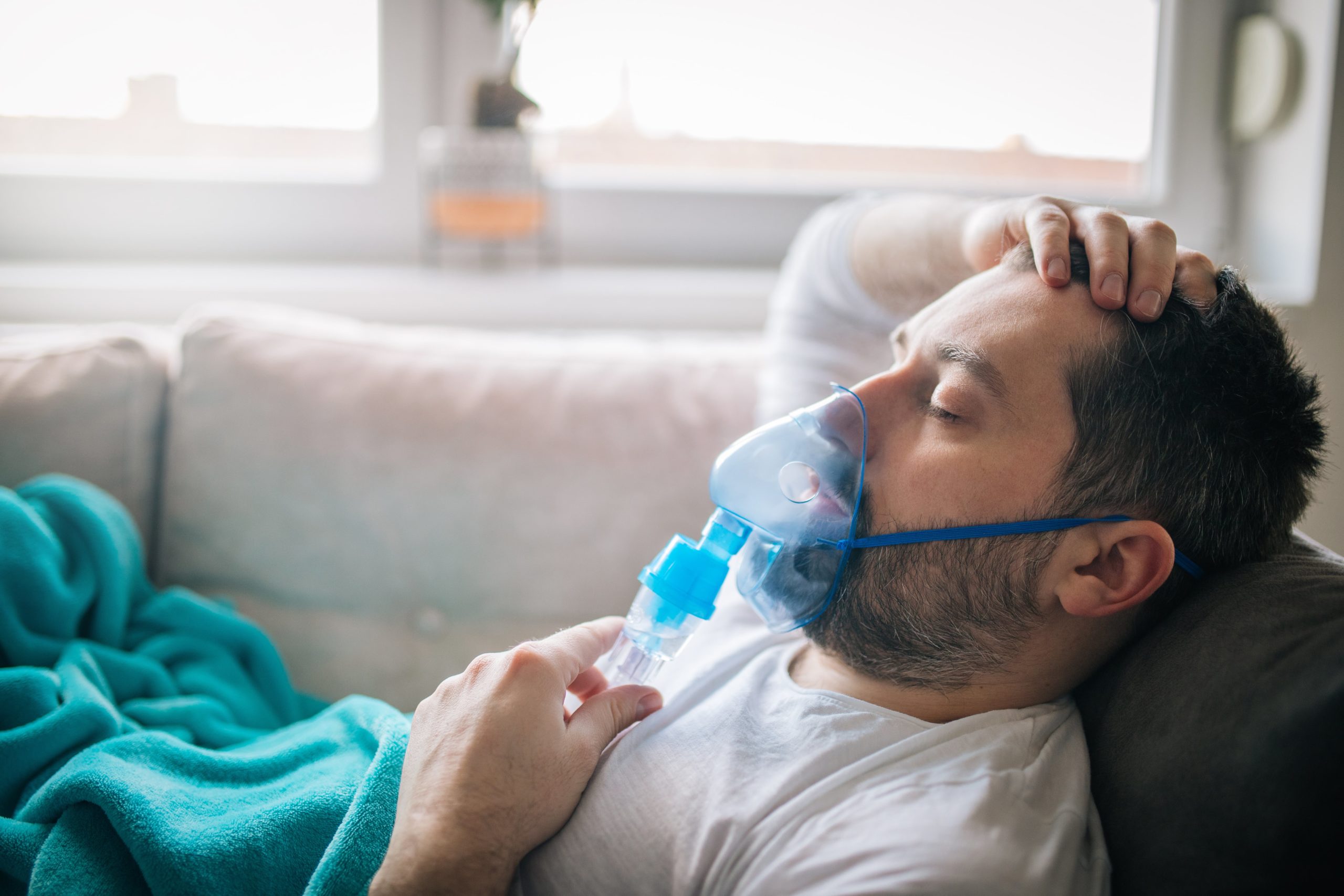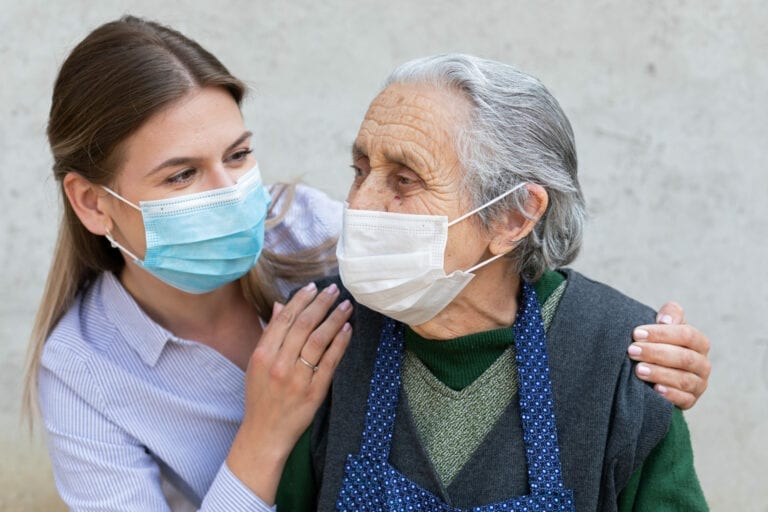Every home care provider is aware that a patient’s needs vary based on their medical conditions. How does that work for those receiving care for Chronic Obstructive Pulmonary Disease COPD? Various illnesses call for different approaches to care.
Describe COPD.
Chronic obstructive pulmonary disease, or COPD, is a catch-all name for a group of long-term lung disorders that make it difficult for a person to breathe normally. As COPD symptoms frequently appear later in life, it is frequently associated with other medical disorders.
Careful management of COPD symptoms is essential to avoiding potentially dangerous respiratory infections. Flare-ups are these symptomatic times, which can be quite painful for the person and have a significant negative influence on their quality of life.
How may COPD home care be beneficial?
One approach to stop those flare-ups is through COPD home care. Many methods exist for managing COPD and ensuring that symptoms are kept to a minimum, if not absent altogether.
Advice for Your House In the Event of COPD
It can be difficult to live with chronic obstructive pulmonary disease (COPD). You can experience chest tightness and a lot of coughing. And occasionally, even the most straightforward tasks might leave you out of breath.
Age may make the symptoms of this chronic illness worse. Although there is currently no cure for COPD, effective medication can help you control the condition.
You might be asking what kinds of lifestyle modifications you should additionally make to help you stay well if you have COPD and your medicine is successfully controlling your symptoms.
Some individuals discover that doing mild breathing exercises improves their ability to manage their breath. Also, it can aid in breathing more easily by strengthening your respiratory muscles.
Yet there are other suggestions for dealing with COPD. Making adjustments to your house can also make it a more cozy, airy place.
Here are a few tips for making your home COPD-friendly.
- Make use of a shower chair.
Even taking a shower can leave you out of breath and worn out. Standing, taking a bath, and washing your hair while holding your arms over your head all need a lot of energy.
By using a shower chair, you can avoid making your problem worse. Sitting down reduces repetitive bending. Also, there is a reduced danger of harm from a fall or slip when you can save energy.
- Keep a fan running in the restroom.
The bathroom becomes more humid as a result of shower steam. Moreover, this can aggravate COPD, bringing on coughing fits and shortness of breath.
Just take a shower in a well-ventilated bathroom to prevent your symptoms from getting worse. If at all feasible, utilize an exhaust fan, leave a bathroom window cracked, or take a shower.
Use a handheld fan in the bathroom while taking a shower to lower humidity and ventilate the space if neither of these is possible.
Make your home a non-smoking environment.
Smoking, whether it be personal or passive, is a major contributor to COPD instances. Even if you’ve stopped smoking, being around smoke can make your symptoms worse.
You should refrain from smoking and keep your home smoke-free to maintain the health of your respiratory system.
Pay attention to secondhand smoke as well. This is the smoke that remains after someone smokes. Hence, even if a person doesn’t smoke near you, the smell of smoke on their clothing can exacerbate your symptoms.
- Switch out your carpet with wooden floors.
Pet dander, dust, and other allergens are just a few of the contaminants that carpets can trap. Depending on the severity of your problems, replacing your carpet with hardwood or tile flooring may help you feel better.
Consider purchasing a vacuum with a HEPA filter and regularly vacuuming your floors if you are unable to remove your carpet. Have your carpets, fabric furnishings, and drapes steam cleaned every six to twelve months.
Connect a purifying device. Allergens, as well as other pollutants and irritants, can be eliminated from the air using an air purifier. Get an air purifier with a HEPA filter for superior filtering.
- Avoid utilizing harsh chemicals inside.
Some of the cleaning products, disinfectants, and mop chemicals you use around the house may aggravate your asthma and cause it to flare up.
Make a concerted effort to completely avoid strong chemicals. This covers personal hygiene products and cleaning agents for your home. Air fresheners, plug-ins, and scented candles should also be used with caution.
Seek for things free of scents that are natural or non-toxic. Consider creating your natural household cleaners if you need to clean. You can make a tonne of different things with vinegar, lemon juice, baking soda, and water.
- Clear out any junk inside.
By removing clutter, you can breathe easier because less dust will accumulate.
Your home will be better off with less clutter. Dust loves to grow where there is clutter. De-clutter your shelves, desks, tables, corners, and bookcases in addition to vacuuming and scrubbing your floors.
- Inspect your air ducts and air conditioner
You might overlook this component of home upkeep, but it’s crucial if you have COPD.
Your home’s presence of mold and mildew can go unnoticed and unintentionally exacerbate your illness. Schedule an annual mold check of your air conditioner and a ductwork examination for mildew.
Cleaning up the mold and mildew in and around your home will improve the air quality and make it easier to breathe.
- Avoid escalators
If you reside in a multi-story house, think about downsizing to a single-story house.
It may be difficult to move out of your house, especially if you raised your family there and have spent a lot of time there. Yet if you have moderate-to-severe COPD and your symptoms are becoming worse, climbing stairs every day can cause recurrent breathlessness attacks.
If you are unable to move into a one-story home, you can install a stair lift or turn a downstairs room into a bedroom.
- Purchase a mobile oxygen tank.
If you require oxygen therapy, discuss getting a portable tank with your doctor. They are portable, lightweight, and small, so you can move them from one room to another without stumbling over a cord.
You can gain independence and enhance your quality of life by traveling outside the home with ease by using a portable oxygen tank.
Keep in mind that oxygen feeds a fire. Make sure you understand safe usage procedures. As a precaution, have a fire extinguisher in your house.
Home Care Near Me Let’s Get Started!
Get Immediate Help with Information, Costs & Payment Options.







